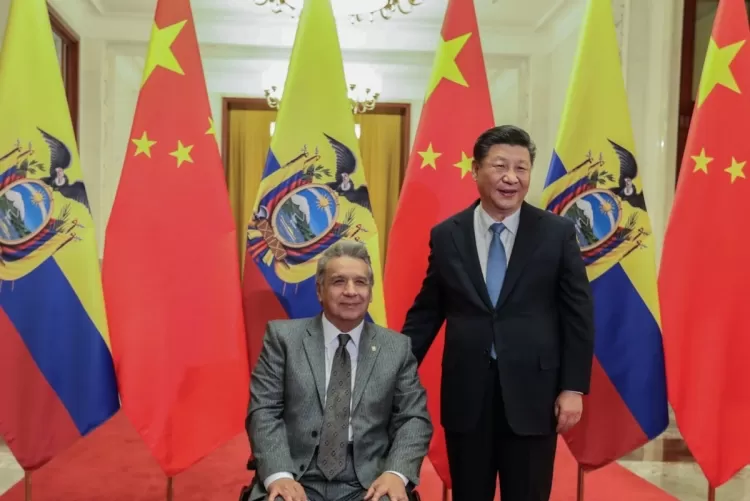Ecuador’s Debt-for-Nature Swap: A Game-Changer for Conservation and Economic Relief
Ecuador has completed a groundbreaking debt-for-nature swap, a novel approach where the country exchanges debt relief for the conservation of its Amazon rainforest. This move promises sustainable funding for Ecuador’s Amazon Bio Corridor program, benefiting both its economy and the environment.

In a remarkable financial and environmental move, Ecuador has successfully implemented a debt-for-nature swap, turning its economic challenge into an opportunity to preserve one of the planet’s most vital ecosystems—the Amazon rainforest. This innovative approach marks a pivotal moment in global conservation and could serve as a model for other nations grappling with similar financial and environmental concerns.
Ecuador’s Struggle and the Amazon Bio Corridor Program
Ecuador is home to a significant portion of the Amazon rainforest, which spans across several South American countries, including Brazil, Colombia, and Peru. The Amazon is often referred to as the "lungs of the Earth" due to its critical role in absorbing carbon dioxide and producing oxygen. However, the rainforest faces enormous challenges, including deforestation, wildfires, and illegal logging, which threaten its ecological balance.
In response to these threats, Ecuador launched the Amazon Bio Corridor program. This initiative focuses on two key goals:
- Enhancing the management of 4.6 million hectares of existing protected forest areas.
- Protecting an additional 1.8 million hectares of forests and wetlands.
Additionally, the program aims to safeguard around 18,000 kilometers of rivers, contributing to broader climate resilience efforts in the country. However, Ecuador faced a major hurdle in financing this ambitious conservation project, as it simply did not have the funds required to protect such vast natural resources.
The Debt-for-Nature Swap
Enter the debt-for-nature swap—a financial strategy where a country reduces its external debt by exchanging it for funding dedicated to environmental conservation projects. Ecuador’s $460 million debt swap allows the country to buy back over $1.5 billion of its existing debt at a discounted rate, reducing its debt burden significantly. This swap is expected to reduce Ecuador's debt by $527 million over the next 17 years, providing $800 million in fiscal savings.
How It Works: Financial Relief Meets Environmental Responsibility
The deal works by restructuring Ecuador’s debt and generating a sustainable flow of funds for conservation. By purchasing back discounted bonds with cheaper new money, Ecuador frees up substantial financial resources. The swap guarantees a steady $23.5 million annually for the next 17 years, a significant portion of which—$19 million—will be directly allocated to the Amazon Bio Corridor program.
The remaining $4.5 million will be invested in an endowment fund, ensuring that Ecuador’s conservation efforts remain funded well into the future. The endowment fund is projected to grow to over $135 million by 2041, generating returns that will continue to support Ecuador’s environmental initiatives.
The swap involves several key players:
- The Nature Conservancy: An NGO that helped design the swap alongside the Ecuadorian government.
- Bank of America: Arranged a new $1 billion bond to fund the deal.
- DFC (Development Finance Corporation): Provided $1 billion in political risk insurance.
- IDB (Inter-American Development Bank): Offered a $155 million partial credit liquidity arrangement.
Positive Reactions and Criticisms
Ecuador’s economic ministers have expressed optimism about the debt swap, with the country’s Finance Minister noting that it will not only help protect the Amazon but also strengthen Ecuador’s fiscal health. President Daniel Noboa emphasized the high demand for the swap, which was more than four times greater than expected, signaling strong international support for Ecuador's environmental strategy.
However, debt-for-nature swaps are not without their critics. Some experts argue that these swaps might trap developing countries in a cycle of debt, as they exchange one set of obligations for another. In Ecuador’s case, the debt swap involves taking on additional loans, which raises concerns about the long-term financial sustainability of the program.
Moreover, the first debt-for-nature swap, which was implemented in 2023 to conserve the Galapagos Islands, faced scrutiny over the lack of community engagement in the planning stages. The IDB’s independent consultation mechanism flagged these concerns, highlighting the need for more inclusive decision-making processes when such large-scale projects are involved.
The Way Forward: Long-Term Benefits or Short-Term Gains?
While critics remain skeptical, proponents of debt-for-nature swaps argue that they can provide long-term financial stability for conservation efforts, particularly in countries with high levels of debt and ecological importance. Ecuador's swap, in particular, is seen as a model for how countries can align economic incentives with environmental goals, creating a win-win situation for both the planet and its people.
The success of Ecuador's Amazon Bio Corridor program will ultimately depend on the effective management and allocation of the funds generated by the swap. If the country can demonstrate the tangible benefits of its conservation efforts—both in terms of ecological preservation and economic growth—it may inspire other nations to consider similar debt-for-nature swaps.
Conclusion
Ecuador’s debt-for-nature swap is a bold and innovative approach to addressing both environmental and financial challenges. By exchanging a portion of its debt for funding to protect the Amazon rainforest, Ecuador has secured a sustainable future for its natural resources while relieving some of the financial pressures on its economy. However, the long-term success of this initiative will depend on how effectively the country manages the funds and engages local communities in conservation efforts.
As more nations face the dual challenges of economic hardship and environmental degradation, Ecuador's experiment could pave the way for future debt-for-nature swaps. If successful, it could set a powerful precedent for sustainable development and global environmental protection.
What's Your Reaction?
















